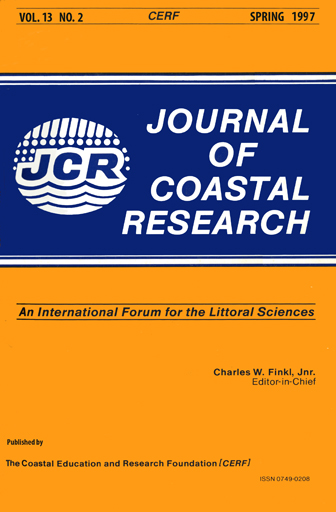Pleistocene Coastal Palaeogeography in Southwestern Australia-Carbonate and Quartz Sand Sedimentation in Cuspate Forelands, Barriers and Ribbon Shoreline Deposits
Keywords:
Pleistocene coastal palaeogeography, Swan Coastal Plain, southern Perth Basin, south-western Australia, cuspate forelandAbstract
The Yalgorup Plain is a well preserved late Pleistocene coastal plain in the Perth Basin, southwestern Australia. The carbonate and siliciclastic sediment sequences therein show that Pleistocene palaeo-coastal sedimentation was dominated by narrow beachridge plains developed as ribbon shoreline deposits and cuspate forelands behind offshore barrier limestone islands and rock y reefs. The key to interpreting the Pleistocene sequences and their sea level history lies in the Holocene models in the same region, especially in the geomorphology and stratigraphy of coast types such as barrier dunes , estuarine lagoons and large-scale cuspate beachridge plains and in the small-scale stratigraphy in beach/dune sequences, shore face sequences, rocky shores and seagrass banks of the Holocene models.
The Pleistocene sequences contain 11 main sediment/rock types: (1) bioturbated foraminiferal calcarenite, (2) shelly/bioturbated calcarenite, (3) laminated shelly calcarenite /coquina, (4) laminated and cross-laminated marine calcarenite , (5) laminated to cross-laminated beach calcarenite, (6) cross -laminated to structureless aeolian calcarenite, (7) calcreted limestone, (8) indurated, bored limestone, (9) shelly calcilutite, (10) quartz sand, and (11) shelly mud. Sedimentation took place within a linear seaway between a hinterland ridge and two lines of offshore limestone rocky reefs. Evolution of the Yalgorup coastal plain took place in several stages related to sea level still-stands in the Pleistocene: (1) formation of an older Pleistocene limestone beachridge plain (Youdaland), within which there was shoaling from marine seagrass carbonate sedimentation to beach to beachridges/dunes; (2) accumulat ion of quartz rich coastal sand barriers (Myalup Sand Shelf and Myalup Sand Ridge); (3) formation of a younger Pleistocene limestone beachridge plain (Kooallupland) within which there was, again, shoaling from marine seagrass carbonate sedimentation to beach to beachridges/dunes.
The overall progressive accretion of the Yalorup Plain records, with subaerial interruptions: (1) sedimentation and progradation in a coastal setting partly behind offshore rocky reefs , (2) changes in style from cuspate foreland and shoreface accretion to coastal barriers, and (3) alternation in sedimentation from carbonate-rich to quartz-rich. Progradation was most marked under two sets of conditions: where carbonate production was active, with sufficient sediment production to promote progradation, and where there was shelter from open oceanic conditions, such as leeward of barrier ridges. When carbonate production was low, quartz sand from southern parts of the hinterland was reworked by coastal processes, and mobilised northwards to develop the shore-fringing, sand platform and a sandy barrier, but during this phase, there was no pronounced coastal accretion and progradation. The results of this study provide several insights: (1) the Quaternary history of the Perth Basin in southwestern Australia; (2) alternation of carbonate/siliciclastic sedimentation in general; (3) the control of the geometry of coastal sediment bodies by ancestral topography; (4) the longevity of limestone ridges in ancestral topography; and (5) the age structure of the Pleistocene coastal plains.


